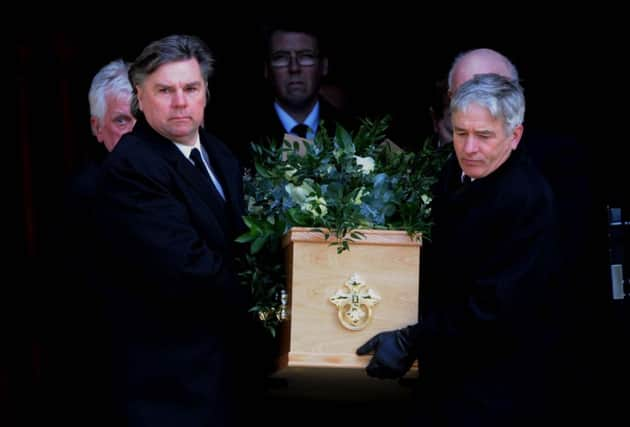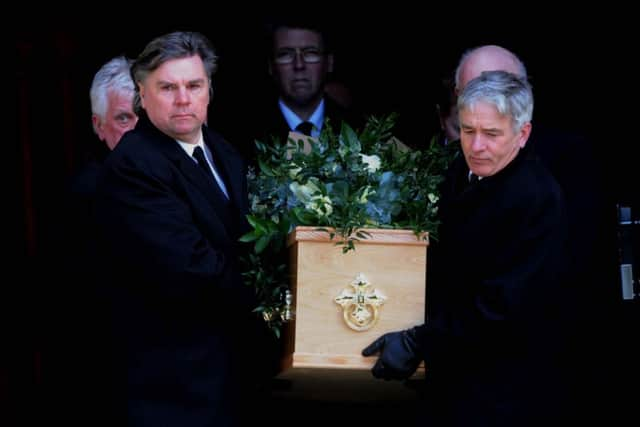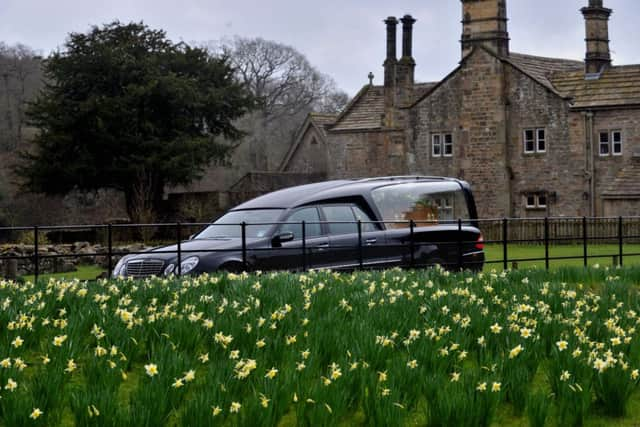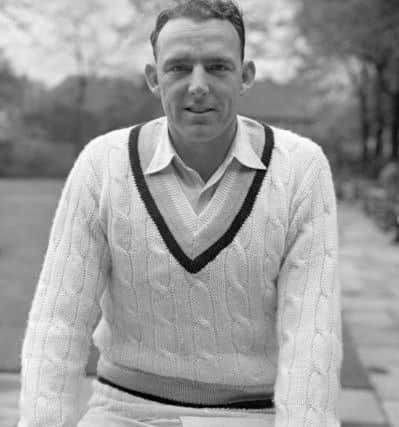Video: Remembering Yorkshire cricket legend Bob Appleyard


In later life they worshipped there, together with their wives, in the timeless confines of the 12th-century church.
“Not long after we started going, he turned up one day,” said Bob.
Advertisement
Hide AdAdvertisement
Hide Ad“I’m sure we were already going when Bob first came,” said Fred, echoing the back-and-forth squabbles of the Yorkshire dressing room of the 1950s.


Nine years ago this July, mourners packed the priory church for the funeral of Trueman, the self-proclaimed “finest bloody fast bowler who ever drew breath”.
Yesterday they filled it for the funeral of Appleyard, one of the great seam and spin bowlers, who died on March 17, aged 90.
If Fred is in heaven - and why wouldn’t he be? - he definitely got there before Bob, although Bob would probably contest the point.
Advertisement
Hide AdAdvertisement
Hide AdThe debate could go on for all eternity, just like their records as cricketing legends.


On a sunny yet storm-tossed afternoon, when the four seasons seemed to have rolled into one, it was easy to see why Appleyard and Trueman each laid claim to have been the first to visit Bolton Abbey.
Situated about five miles from Ilkley, on the banks of the Wharfe, it is one of the most beautiful spots in the most beautiful of counties, the evocative ruins and enduring river attracting almost 250,000 visitors a year.
It was often said of Appleyard that he would have bowled at both ends of a cricket pitch if the laws allowed it, such was his stubborn nature and love of the game.
Advertisement
Hide AdAdvertisement
Hide AdBut even he might have baulked at delivering into the wind yesterday, which was so strong that it threatened to blow the flag of St George clean off the West Tower, the weather encapsulating Bob’s passionate personality.


The mourners arrived in steady procession, their thick winter collars turned up to the wind.
Former team-mates included Ray Illingworth, Mike Cowan, Bob Platt, Bryan Stott and the current Yorkshire president Dickie Bird who took their places among the ancient pews.
Richard Hutton, son of the legendary Len, was there, as was Yorkshire’s chief executive Mark Arthur, board member Robin Smith and former finance director Brian Bouttell. Yorkshire cricket had come out in force.
The service itself was beautifully conducted.
Advertisement
Hide AdAdvertisement
Hide AdAs sunlight flashed and faded through the stained-glass windows, and as the howling wind reverberated around the priory ruins, there were hymns that Appleyard himself had chosen, among them Blake’s Jerusalem.
Sidney Fielden, a close personal friend, read a verse from a bible that belonged to the great Yorkshire and England spin bowler Hedley Verity, Appleyard’s hero.
The music of John Rutter featured prominently, while the Rector, the Revd Simon Cowling, and the Revd James Turnbull, spoke with moving affection.
Appleyard’s coffin, draped with white roses, then took its final journey to Skipton Crematorium.
Advertisement
Hide AdAdvertisement
Hide Ad• BOB Appleyard was one of the greatest seam and spin bowlers in the game’s history and played a key role in England’s 1954-55 Ashes success.
He helped Len Hutton’s side win Down Under for the first time since the Bodyline series in 1932-33 and took 31 wickets in nine Test appearances.
Appleyard captured 642 first-class wickets for Yorkshire at 15.42 during a relatively short career in the 1950s, but his story was about so much more than statistics. Two hundred of those wickets came during his first full season, but Appleyard was then struck down by tuberculosis.
He was largely responsible for setting up the Yorkshire Cricket Academy.